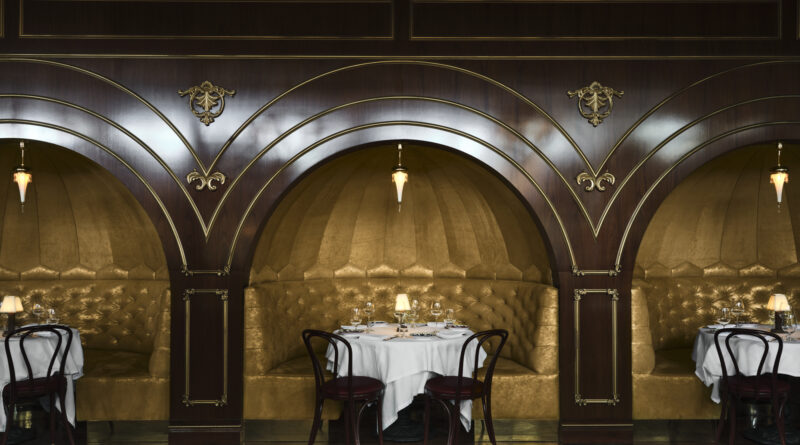Mario Carbone Is a Good Dude, Let Me Introduce You
Carbone, the New York-based ultra-luxe Italian American restaurant opened in Dallas March 31, 2022, to great fanfare. The initially impossible-to-get reservations from foodies and trend followers alike resulted in some mixed reviews about the restaurant, waitstaff attire, and prices. I sat on the fence for a year before jumping off and eating dinner there. I liked it but I didn’t feel much connection to it.
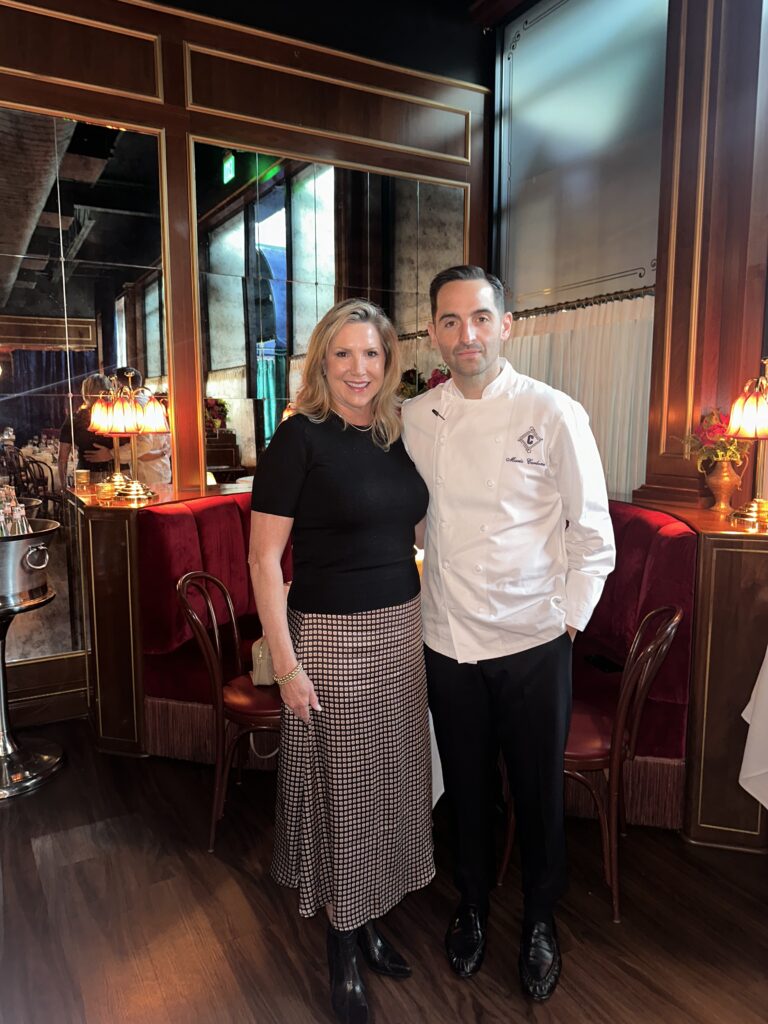
Recently, Chef Mario Carbone was in town to launch some limited-time-only menu items that he and his chefs have been playing around with in the Carbone NYC test kitchen. Carbone will launch specialty menu items quarterly throughout the year, with some possibly finding a permanent place on the menu.
While Chef was here training the local culinary team on these items, I had a chance to chat with him about the specials and how Carbone has resonated with the Dallas diner. Our interview took several unexpected turns which brought me to this conclusion:
Mario Carbone is a good dude. He’s down-to-earth, passionate about food and wants to share that with everyone. His restaurants are theatrical and he’s unapologetic about that. He’s nostalgic, thoughtful, and creative. Since meeting him, I’ve returned to Carbone and enjoyed the experience so much that I look forward to returning with several couples so we can appreciate the generous portion sizes and try more menu items.
Here is a transcript of our interview, which has been edited for clarity.
Kersten: Welcome Back to Dallas. What on the specialty menu are you most excited about?
Mario: Thank you. We are doing this pasta on the named Spaghettini Bambini. I didn’t come up with the idea, but I named it. As kids you often eat noodles with butter and cheese. Sometimes as an adult that’s all you really want. How do I make the best noodles, butter and cheese?
So, I bought this really beautiful spaghetti, a great bronzed-die spaghetti and paired it with grassfed butter and a very special parmesan cheese that’s called Vacche Rossi which is from Parma made from the famous red cow of Parma and their cheese which is aged twice as long as a parmesan cheese. It’s this dark, really nutty parmesan cheese. It gets tossed at the table for you just like fettucine alfredo does in Rome. Just three ingredients, super simple.
K: That dish is very nostalgic. And your restaurants are very nostalgic, an ode to New York in the 1950s with Frank Sinatra. I should have been born in that time.
M: Me too.
K: One of my favorite movies is with Chazz Palminteri .
M: A Bronx Tale.
K: Yes!
M: Chazz was just in [Carbone in NYC] the other night with his son. It’s like when they walk in the whole story is finished. Chazz walks in and . . . scene.
K: How does that vibe resonate with a younger audience?
M: I asked myself that when we first started as well because I knew I wanted to do this throwback restaurant. I wanted to make it like I remembered it as a kid, going to these places with my parents in our neighborhood – the local special occasion Italian restaurant. I wanted to bring that back. I knew I couldn’t do that with today’s music. There’s just something happy about that period [in dining and music]. It’s hard not to have a smile on your face when you’re listening to the Chiffons. It’s happy, it’s nostalgic, it’s cinematic. It feels like a play or movie. Guests become part of the performance.
K: It’s immersive dining, which is such a thing now.
M: It’s a night out. It’s not just dinner. It’s like theater; we put on our costume and set the stage and the only thing that changes each night is the audience.
K: Does that ever get boring for you?
M: I think it could be for some people. I think you have to love it. There is a personality type that loves this kind of work, it’s instant gratification to pour a guest a glass of wine and [the guest says] ‘this is exactly what I’m looking for.’
For me, there is something very cathartic about doing the same thing every day. I’m a person who likes routine, so setting up my station and making my mise en place. At 4 o’clock I have an espresso. I’m that creature. I think for people who love this business, they can’t imagine doing anything else.
K: I do think people who work in restaurants thrive on that with the allowance of a little bit of chaos. That’s a thrill, that’s the adrenaline.
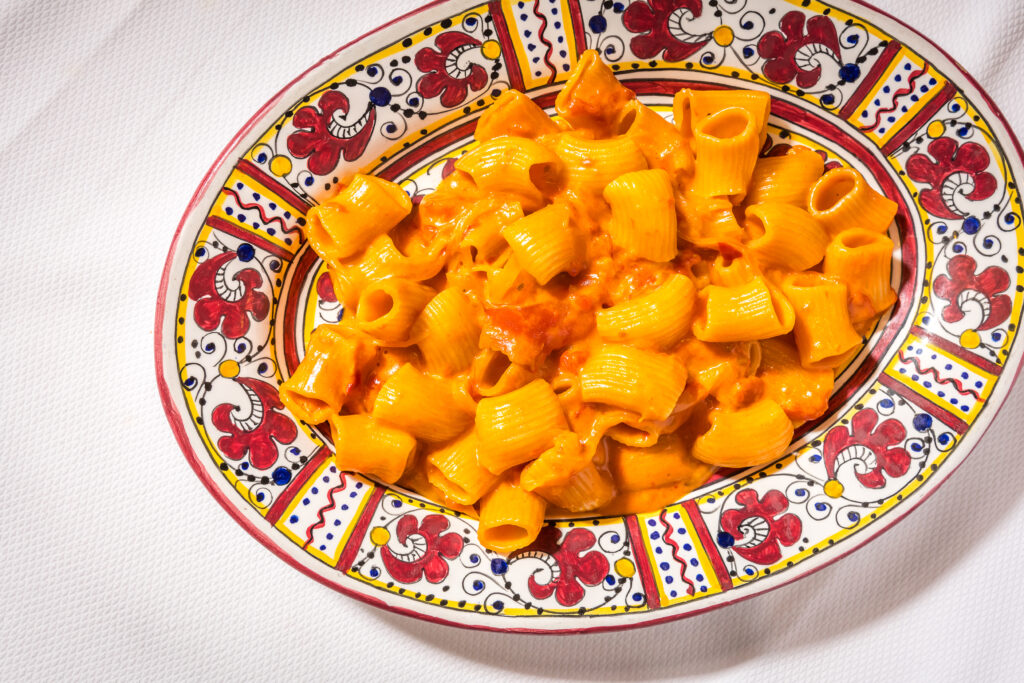
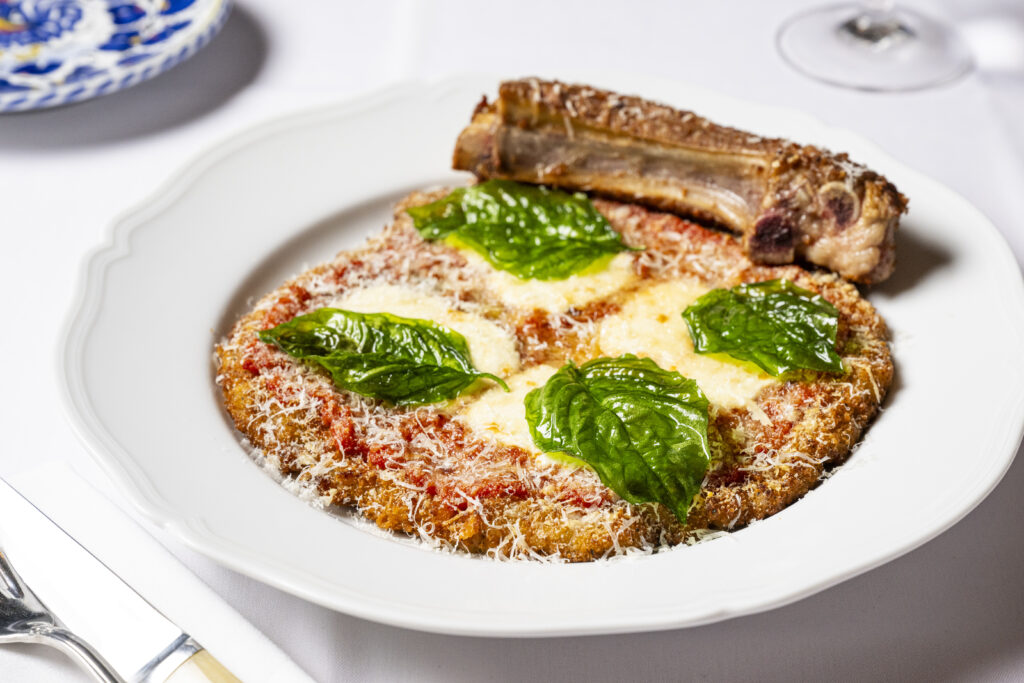
K: What’s the number one seller here?
M: Spicy rigatoni. What else? Caesar salad and veal parmesan. Top three.
K: Is that consistent throughout the company?
M: Pretty consistent throughout. Those are often the exact items; they make a meal. We try to encourage regulars to navigate a little. This special menu is a way to get regulars to try something different.
K: What are some of your favorite local ingredients to use?
M: I love pecans, and we try to incorporate those from time to time in the raw bar in raw fish. I like them with pasta in brown butter and with a really nutty cheese, sage and rosemary. I’m working on a dish now with potato gnocchi that has brown butter. I can’t decide if I want to use sage or rosemary, a little bit of gorgonzola cheese and then crushed pecans.
And I’m inspired by green markets. You want to see what produce that’s happening right now locally. I went to Jimmy’s the other day and he was selling very a very obscure vegetable called “cucuzza”
K: You are not gonna believe this.
M: You don’t know . . .
K: I definitely know cucuzza
M: How do you know cucuzza?
K: Because my cousins are Sicilian and my uncle grew them on his farm in Louisiana. I literally just had it there. It looks like a giant green bean.
M: Gigantic, yeah,
K: Dude, so good.
M: You can get them at Jimmy’s.
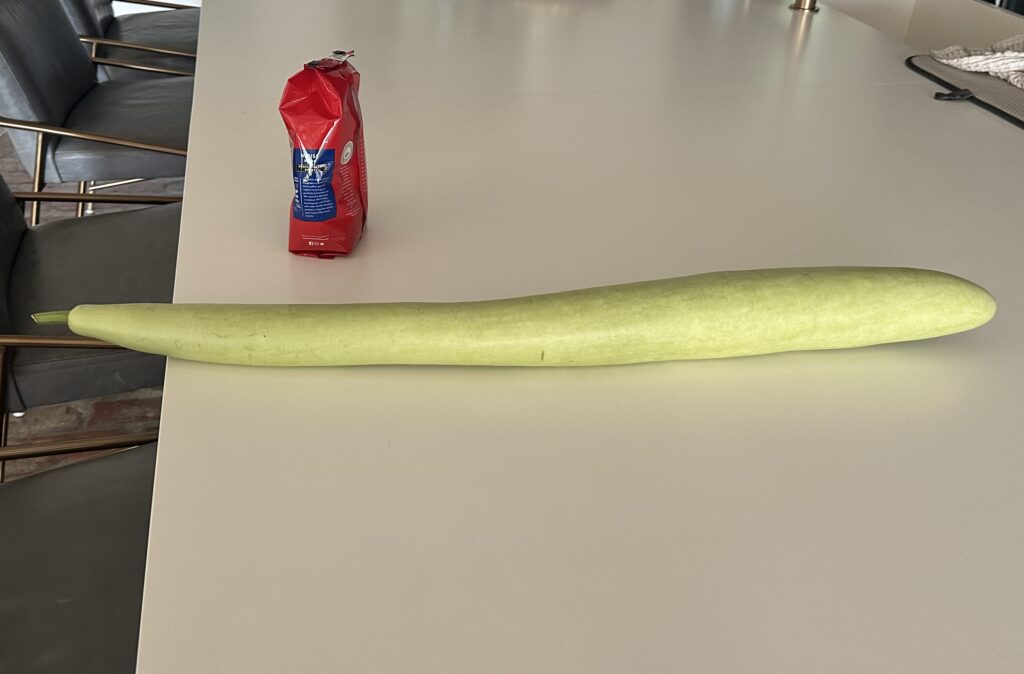
M: It’s super obscure. Jimmy gets from a local farmer. I did a preparation called scapece with it. It’s pan fried in olive oil and then dressed in vinegar so it’s very punchy, almost like a pickle but more savory than a pickle. I added a little bit of caciocavallo cheese. I bought really beautiful Italian prune plums there the other day, too.
Jimmy is an ingredient anchor for us. Italian American, see what they’re selling. See what they have all their produce is from around here, friends of theirs. Maybe I’ll grab a sandwich.
K: I think about pecans this time of year, they seem autumnal. I think about chestnuts around Christmas time. Roasting them . .
Both of us: On an open fire.
M: A little bit of honey, salt, black pepper. Yeah, that sweet savory thing.
K: Are you serving them [at Carbone]?
M: It’s too early but I will.
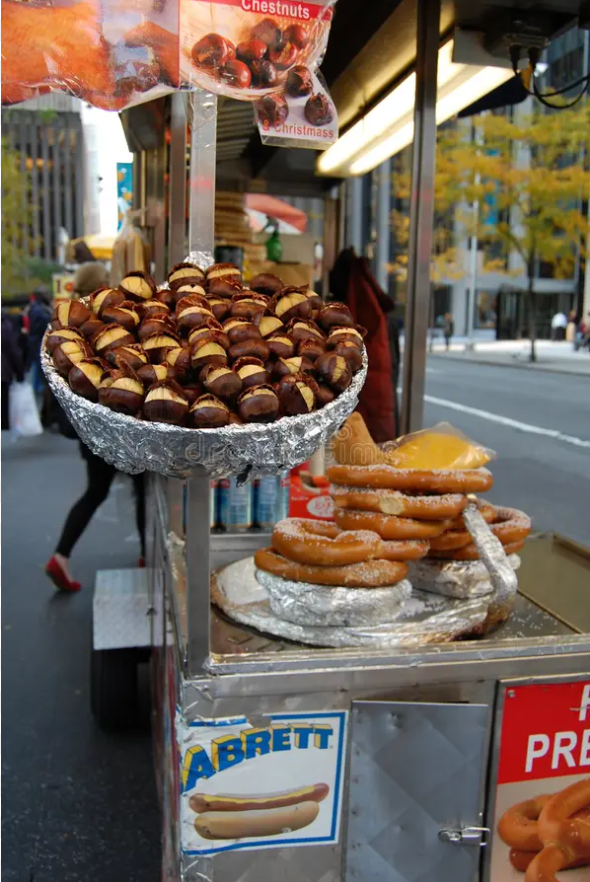
K: They are something you don’t see on every menu.
M: They remind me of the street carts in New York City,
K: The smell! I lived in NYC and in Brooklyn Heights. Autumn in New York. . .
M: I love those carts.
K: Me too!
M: They’re disappearing There are less and less of them every year.
K: That’s terrible, but if you go to Europe in Vienna you see them and smell the burning salt.
M: Honey, salt, and pepper.
K: What are the menu items on the Carbone menu that cannot be found at any other Italian restaurant in Dallas?
M: I don’t really know what’s going on at the other restaurants. I think what we make here is really popular. Italian American food can be found in lots of restaurants in Dallas and throughout the country. We’ve homed in on the ingredients that we love, and we try to buy them consistently.
The branzino that we buy is the same branzino for all the restaurants. I’ve worked with that farm in Spain to have it exactly how I want it – the size and fat content so that there’s not a discrepancy in raw ingredients. I’m going out to Rosewood Ranch tomorrow to check on the program we have going on and say hi to my cattle. Many of the ingredients we have are standardized so we can have consistency. Anyone visiting this restaurant that knows the other Carbone is going to find the exact same quality branzino. I doubt anyone else [locally] is doing that. Those things take years of me developing exactly what I want but I try to pepper in both nostalgic things from my childhood and upbringing and seasonal dishes and things that I have been working on.
K: You’ve said that you knew that being successful would take a long time. Tell me about this restaurant in Dallas and how’s it’s done and how it has succeeded, or not, to your expectations.
M: I’m so happy with the first few years of its life here. I’m really thrilled where we are today. The team is experienced, the guests are knowledgeable about what we do. We have a base of customers and regulars. We have settled in very nicely, I think. There is something beautiful about breaking in a booth, you know. Yes, it’s pretty when it’s brand new but it’s so much more beautiful after a few years. The kitchen now has shorthand, we can talk in shorthand, we can work in shorthand. We can add different events that add to what’s already energetic and entertaining. Now we are having fun with it. The pressures of the opening kind of go away and what’s left behind is that you’re beginning to wear it in. We continue to play with the space and soften this and warm that .. I love the fact that it’s never done. For us, we can change this and evolve. You monitor it and listen to it closely, listen to your customers . . it’s going to wear in nicely. That’s what I love most about watching restaurants age. It’s like a baseball glove that softens with age.
K: Has there been anything about this restaurant that hasn’t worked the same way in Dallas as that same element has worked in other markets?
M: We have elements that didn’t exist in others, such as this huge outdoor area in between the two restaurants [Carbone and Carbone Vino]. At first it was completely open to the elements, and I assumed that would work great. What I didn’t factor in is the extremity of the weather here, even on a single day you can experience all four seasons. We had to take a step back and enclose it like a palm court, an atrium. That was a big shift for us in terms I what I thought it was going to be and what it turned into. Now it’s really lovely, it feels like The Plaza in New York.
K: Anything on the menu that hasn’t been a hit here as it has been I other markets, or, conversely, is there something here that you’re surprised that these Texas just can’t get enough of?
M: I always know that there are dishes on the menu that we don’t sell a lot of, and I’m cool with that. Like the pork chop. We’re only going to sell a few of them but I love that dish and I love that it’s on the menu. It’s kind of a cliché but it’s also true, you can’t put enough steak on the menu. I think when we first opened, we underbeefed the menu. Now we are working closely with Rosewood Ranch to increase it. But I didn’t want to increase it just by throwing more cuts out there. I wanted it to be more thoughtful. [On the beef dishes] I thought I was covered but I wasn’t.
K: What do you think about Michelin coming to Texas?
M: It’s great for Texas. It’s great for the food community. I think it’s a slippery slope when you’re cooking for a Michelin and not cooking for the customer. I preach to the teams, is the most important critic is the customer. If they’re happy, they’ll come back.
K: One last question. What is value to you? I have to ask, people talk about the prices here.
M: To me it’s getting something that I can see, taste, enjoy, appreciate the quality of the work that went into it. I can fully appreciate the product in front of me. I want to be sure that people get what they pay for here. We serve big portions. Guests can take them home or share meals with a group at the table. Yes, our prices are high, but I also think that when you look at it from a portion and shareable manner, is it really that much different.
K: Thank you.
M: Thank you.
What I like most about being a writer is telling others’ stories and trying to eke out their personalities in interviews and introduce that side of my subject to readers. This one surprised me because I expected a large personality whose reflection is in the largeness of Carbone. Rather, Chef Carbone is an approachable, creative soul who is passionate about feeding and entertaining guests.
As of today, the Spaghettini Bambini is not on the permanent menu, but it should be. It is absolutely brilliant.

